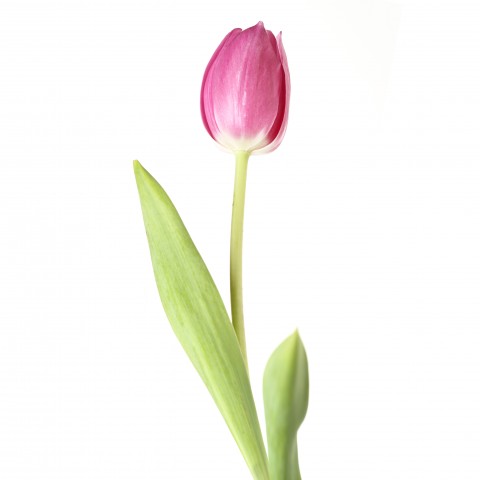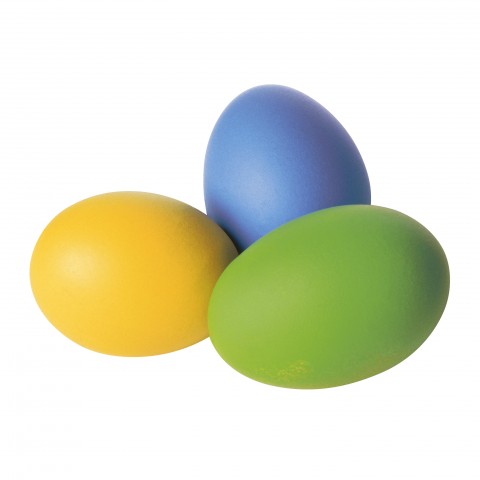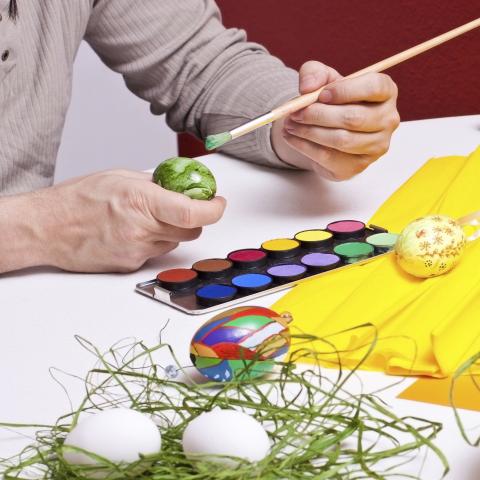Easter Sunday is one of the most popular and vastly celebrated holidays in the United States. Christians take Easter to commemorate the resurrection of Jesus Christ, while the secular population finds numerous ways to enjoy this popular holiday with family and friends.
By learning about the meaning of Easter Sunday to Americans, as well as how it’s celebrated across the country, you’re also getting a glimpse of American culture—both the religious and the secular. This, in turn, will lay down for you another stepping stone in your journey to mastering the English language.
At EnglishClass101.com, we hope to make this a fun experience as you learn about the Easter bunny, Easter eggs, and the religious side of this holiday. Let’s get started!
1. What is Easter Sunday?
Easter Sunday, one of the most prevalent holidays in the United States, is celebrated by both religious and non-religious citizens. Secular events, as well as family celebrations and traditions, take place all across the country. Christians celebrate the holiday to commemorate the resurrection of Jesus Christ, and do this through special events all through the weekend.
2. When is Easter?
What day is Easter on, and when is Easter this year? The date of Easter Sunday varies each year. For your convenience, here’s a list of this holiday’s date for the next ten years.
- 2019: April 21
- 2020: April 12
- 2021: April 4
- 2022: April 17
- 2023: April 9
- 2024: March 31
- 2025: April 20
- 2026: April 5
- 2027: March 28
- 2028: April 16
3. How is it Celebrated?
Due to the diversity of denominations in the United States, there are various Easter Sunday traditions across the country. For instance, some people hold a vigil for the entire night before Easter.
In the United States, both the religious and non-religious celebrate Easter Sunday. Whether or not they attend any church, most people in the United States enjoy spending time with family and enjoying large feasts together. While some people observe Easter Sunday for its religious significance, others simply see it as a celebration of spring’s beginning.
On the religious side of it, many people attend church services on Easter Sunday. There are some churches that put on special parades for the holiday, while others put together simple get-togethers for its members, such as a picnic or potluck, to enjoy good food and Easter desserts.
Secular events include hunting for Easter eggs as well as other activities for children. These events aren’t necessarily religious and anyone is invited to participate. Oftentimes, community events take place for this notable holiday when people like getting together.
More symbols of this holiday include the Easter Bunny, eggs, and flowers. Additional symbols related to spring are associated with Easter, and are still important traditions for this particular holiday.
4. Additional Information: Sunrise Service
Many churches hold service before daybreak, often called a “Sunrise Service.” During these services, Christians arrive before the predawn hours and hold the service as the sun rises. Many people consider this a powerful symbol.
5. Must-know Vocab
Here are some vocabulary words and phrases you should know for Easter Sunday in the United States!
- Candy: Many people put candy inside of colored plastic Easter eggs, as a sweet gift for the person who finds it.
- Easter: Easter is usually a shortened term for Easter Sunday.
- Rabbit: Rabbits have long been associated with the Easter holiday in the United States, largely because they begin emerging during the spring.
- Chocolate: As most children (and adults!) can attest to, chocolate is a favorite candy to find hidden inside an Easter egg.
- Egg: Eggs are another symbol associated with Easter, likely because they represent new life (many Christians also associate an egg as being like a tomb, like the one Jesus was buried in before his resurrection).
- Tulip: The tulip is yet another symbol of Easter.
- Chick: Chicks, like rabbits, are associated with Easter largely because of their cuteness and because they symbolize new life at the beginning of spring.
- Lamb: The lamb is a symbol of Easter for more than one reason. First of all, Jesus is considered by Christians to be the “Lamb of God,” and so the lamb is associated with this concept. Further, a lamb is the offspring of a sheep, once again reflecting the concept of new life in spring.
- Hide Easter eggs: Hiding Easter eggs is a favorite activity among many American families during Easter. These eggs are the same colored plastic ones mentioned above, filled with candy. Sometimes these are hidden all around a family’s home, sometimes outside, and sometimes in large fields or similar areas for many families’ children to search at once.
- Look for Easter eggs: Children (and sometimes adults!) look for the hidden Easter eggs to enjoy the candy inside.
- Hard-boiled egg: Some families like to hard-boil eggs, either for eating or to dye them different colors for fun.
- Easter egg hunt: When children search for hidden Easter eggs, this is called an “Easter egg hunt.”
- Easter egg: An “Easter egg” in the United States usually refers to a piece of plastic shaped like an egg, and is usually pastel-colored. People like to put candy (or sometimes money!) inside of them, to hide for their children to find.
- Easter Bunny: The “Easter Bunny” is an imaginary creature that many parents tell their children about to help bring fun to Easter. It’s often said that the Easter Bunny is the one who lays and hides the Easter eggs.
- Easter basket: An “Easter basket” can mean either a high-end, lovely basket (usually woven) or a more low-end plastic basket (or bucket) used for decoration or collecting Easter eggs.
- Dye eggs: Dying eggs is another favorite tradition among some United States families on Easter. Sometimes the eggs are hard-boiled beforehand, but oftentimes they’re dyed raw. People enjoy dying them pastel colors.
- Decorate: People like to decorate for Easter, and this is usually done with things of pastel colors and Easter symbols.
- Jellybean: “Jellybeans” are another common Easter egg candy, and are sometimes considered more practical to use than chocolate since they won’t melt as easily sitting out in the hot sun. These are chewy and come in numerous flavors.
To hear each word and phrase pronounced, check out our Easter Sunday vocabulary list. Here, you’ll find each word accompanied by an audio of its pronunciation.
Conclusion
We hope you enjoyed learning about Easter Sunday in the United States with us! Does your country celebrate Easter? What do Easter celebrations look like in your country? Let us know in the comments!
To learn even more about United States culture and the English language, visit us at EnglishClass101.com! We offer an array of insightful blog posts, free vocabulary lists, and an online community to discuss lessons with English learners. You can also upgrade to Premium Plus to take advantage of our MyTeacher program and learn English with your own personal English teacher!
At EnglishClass101.com, we hope to make your learning journey more fun, while providing you with the information and support you need to master the English language. Know that your hard work will pay off, and before you know it, you’ll be speaking like a native.
In the meantime, please do have a happy Easter!













